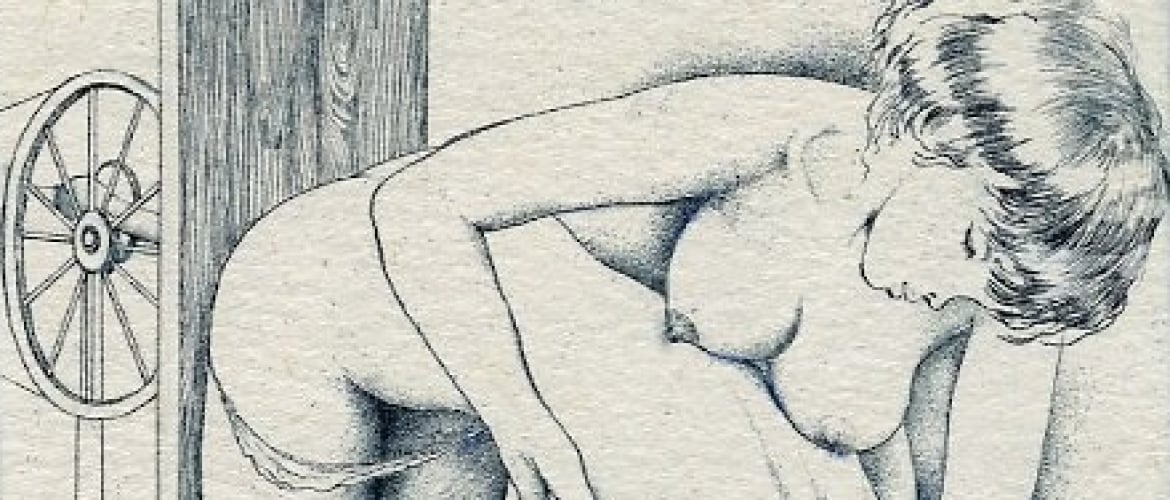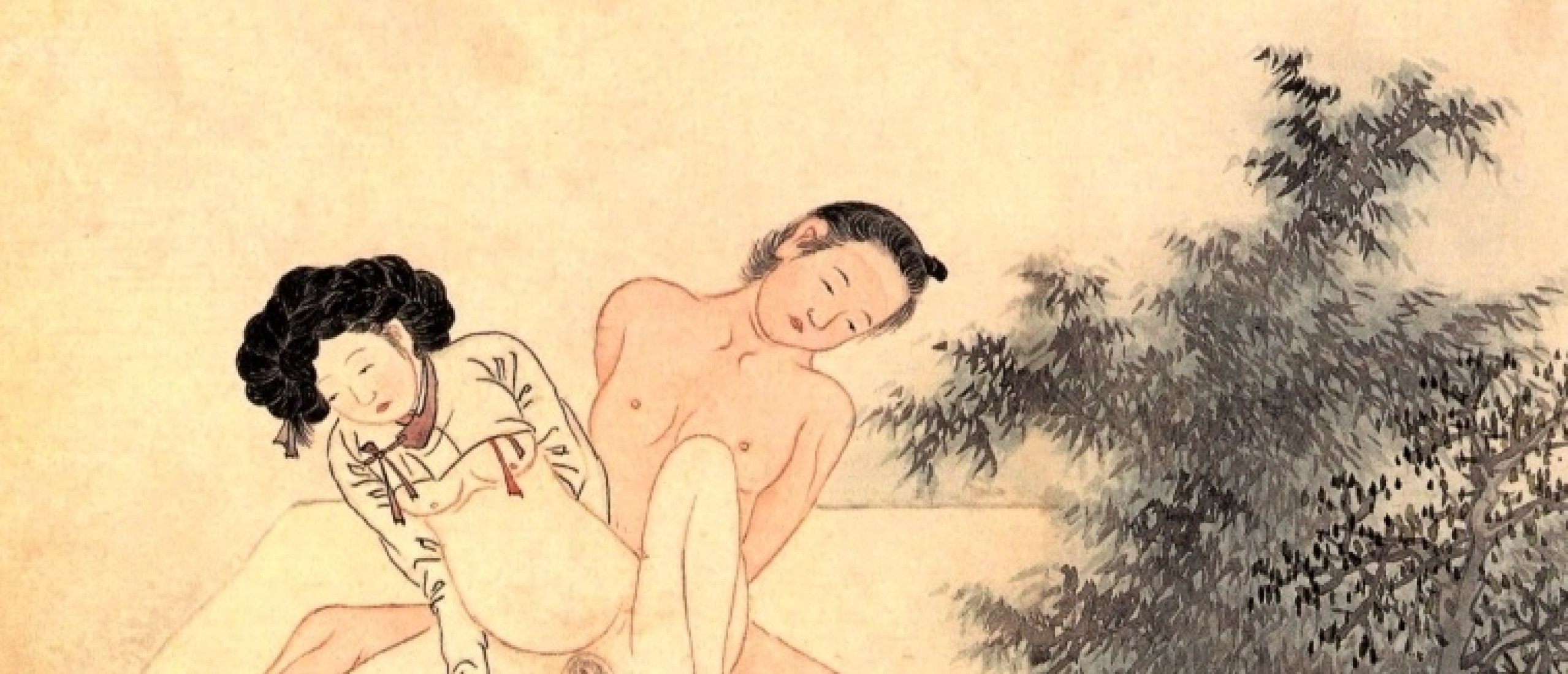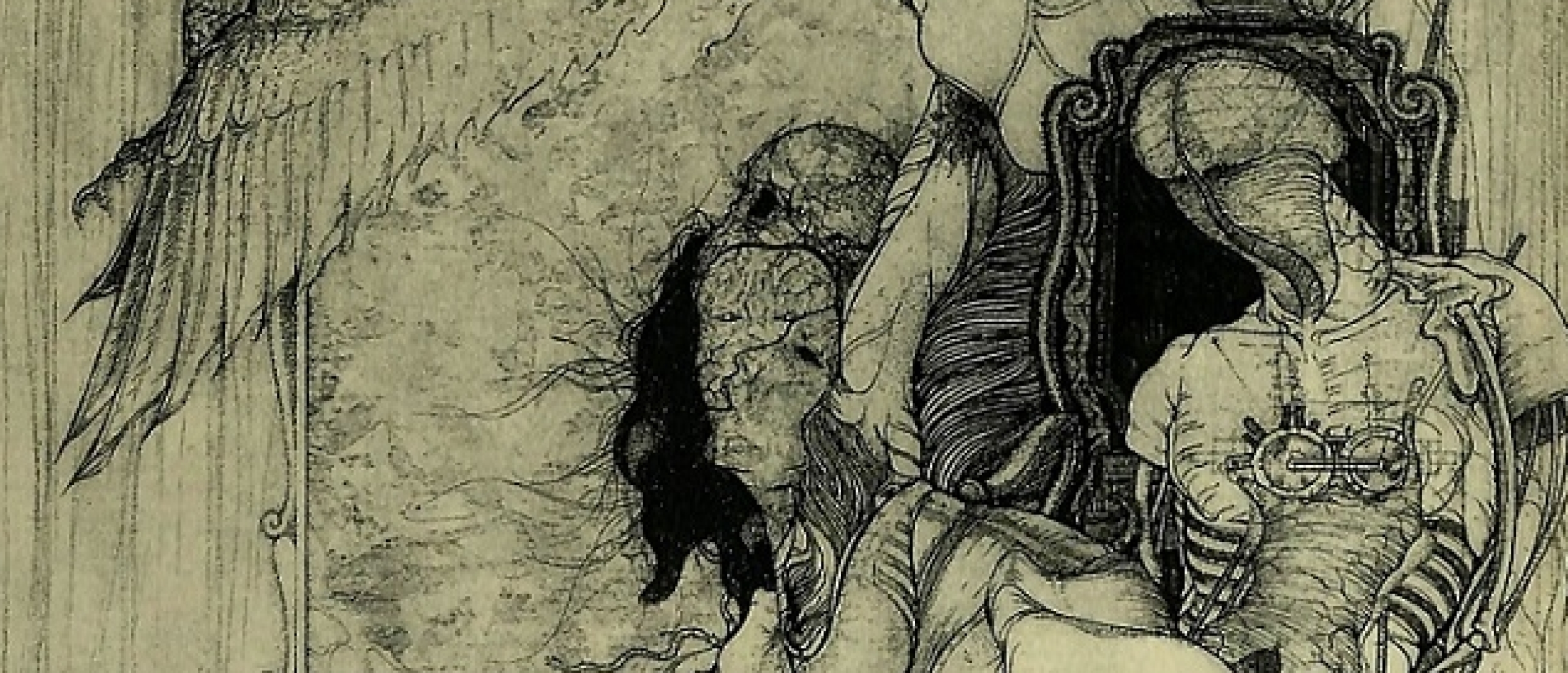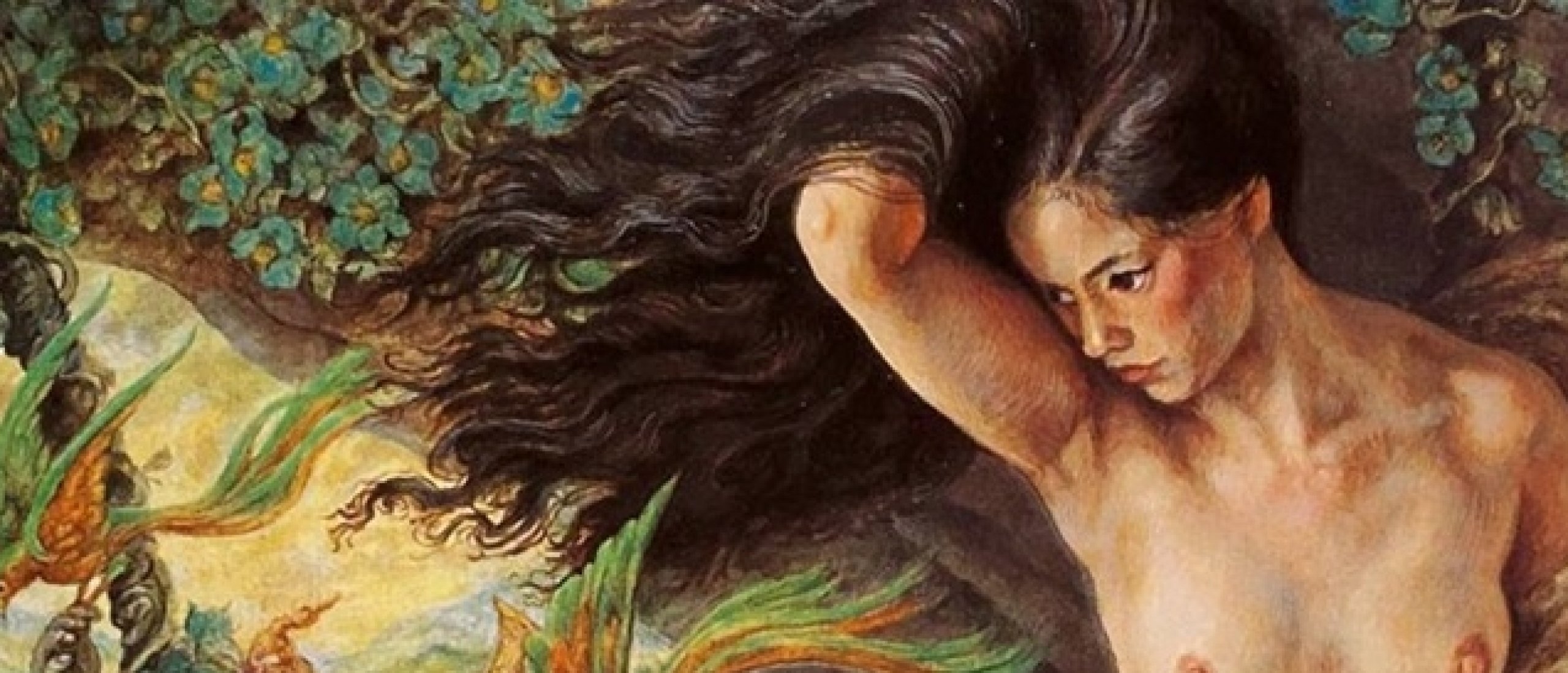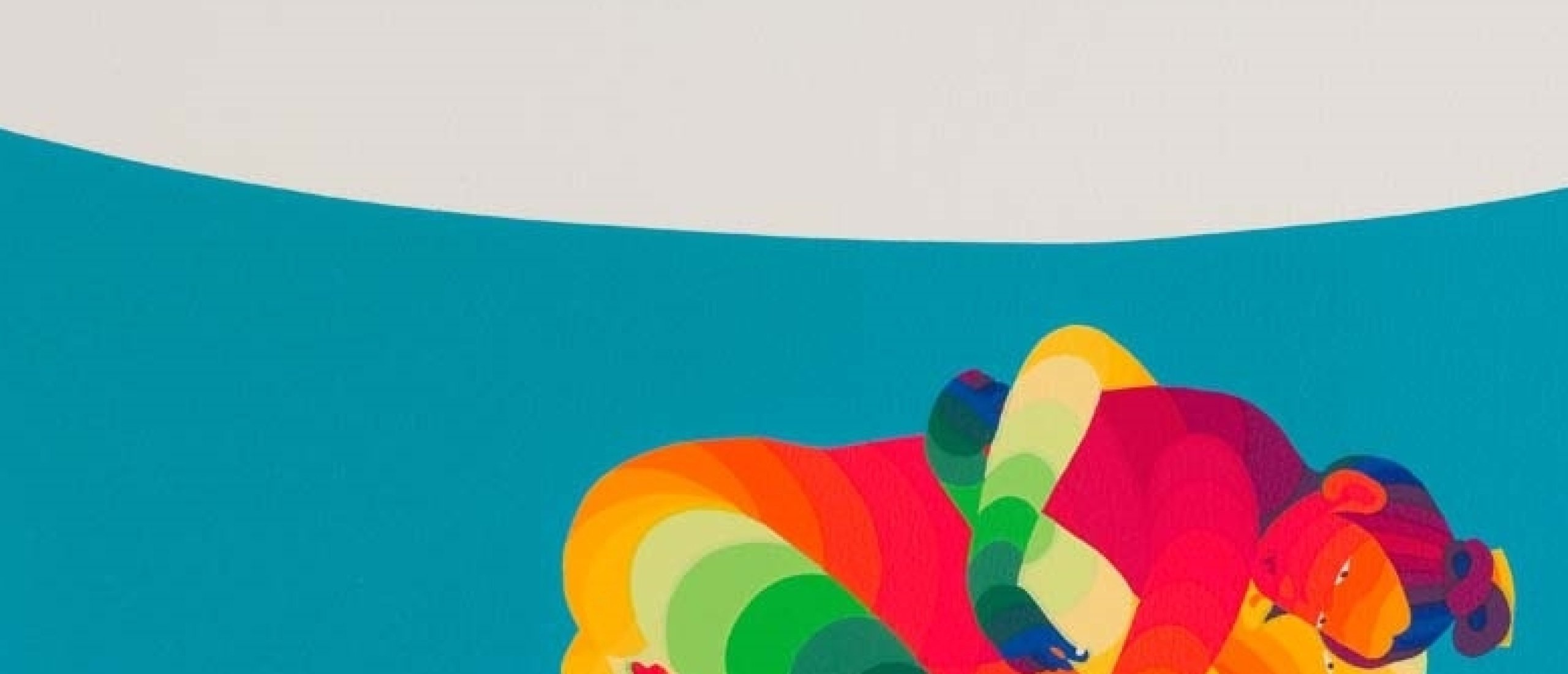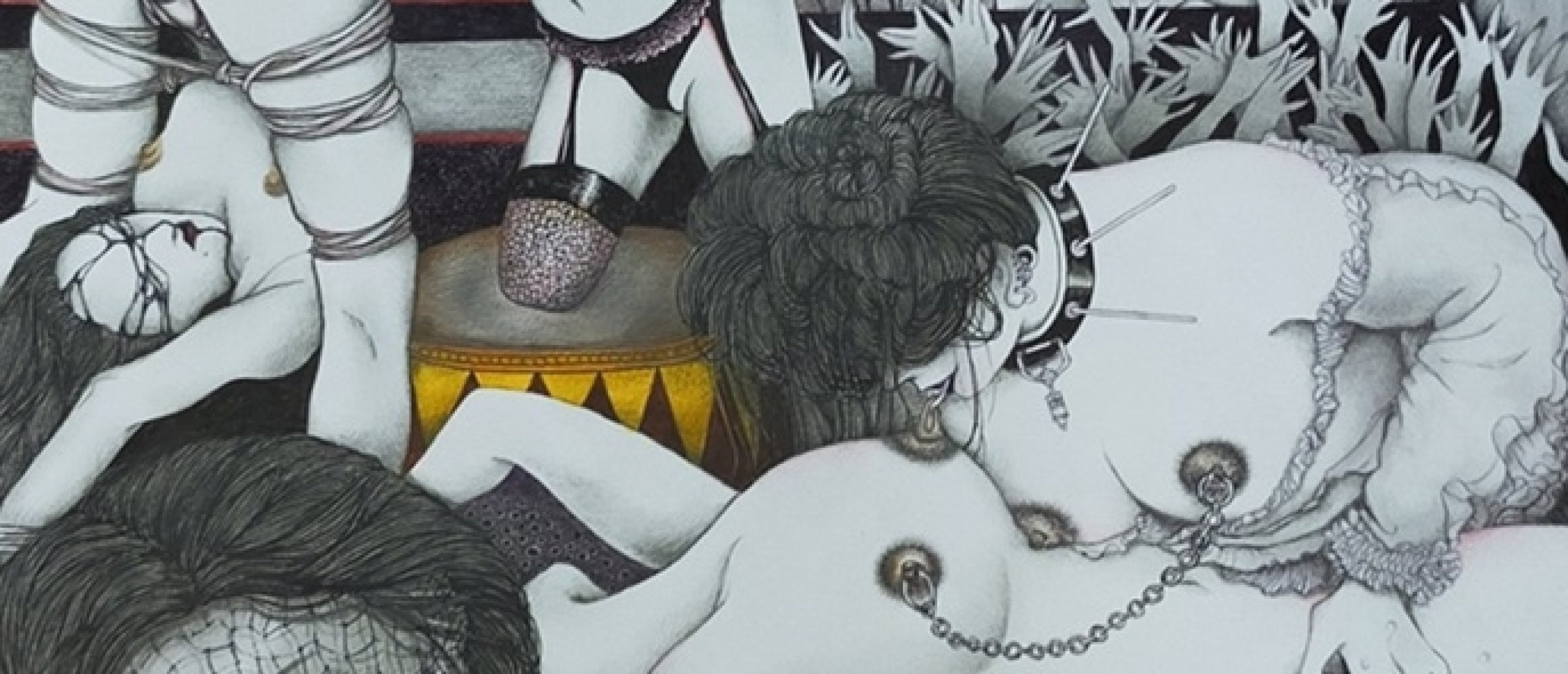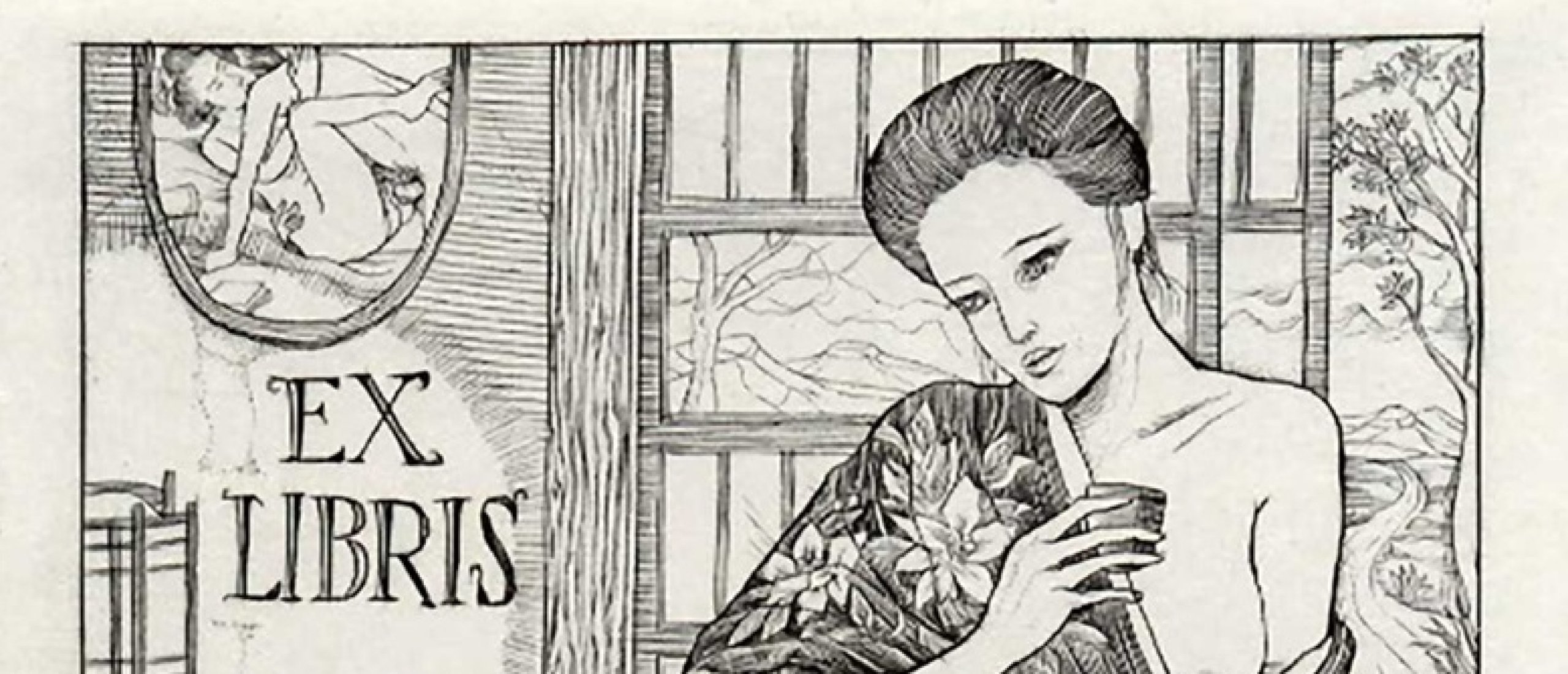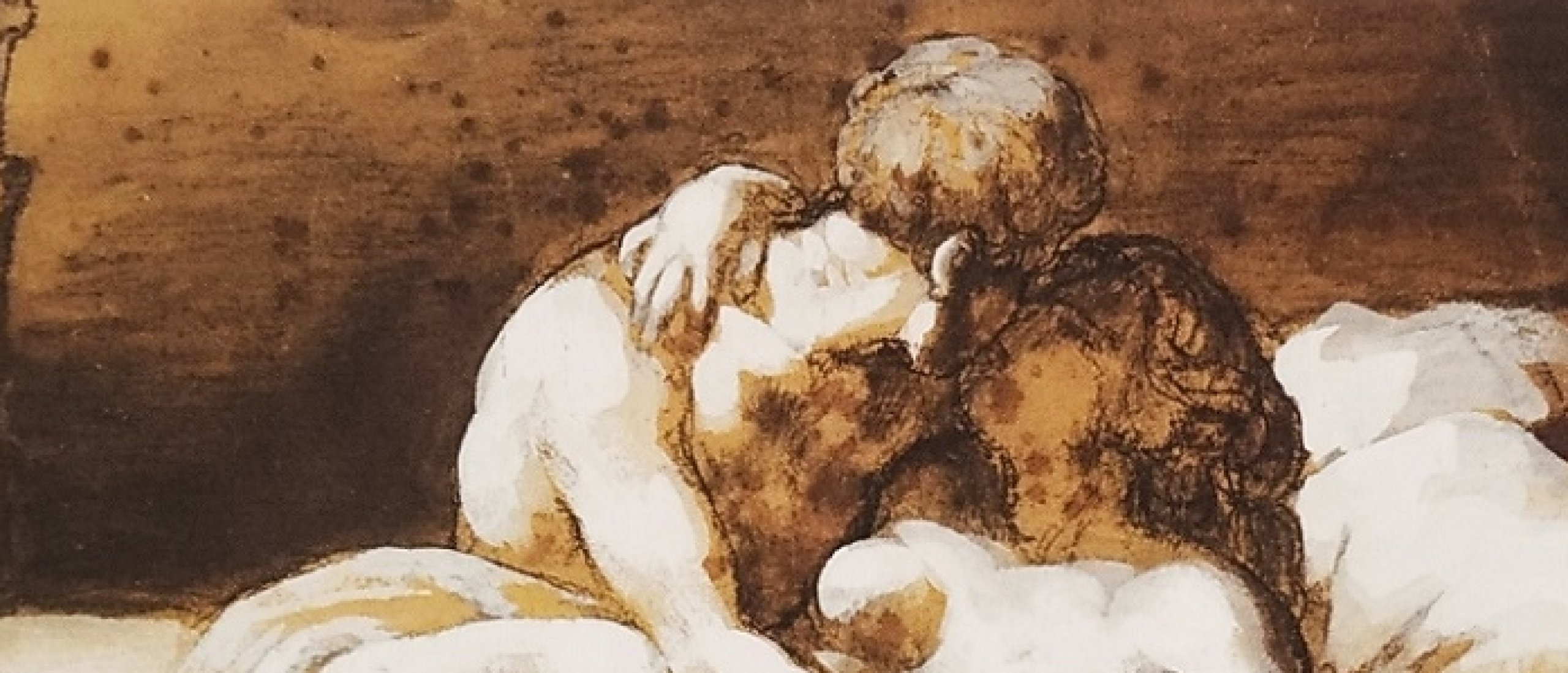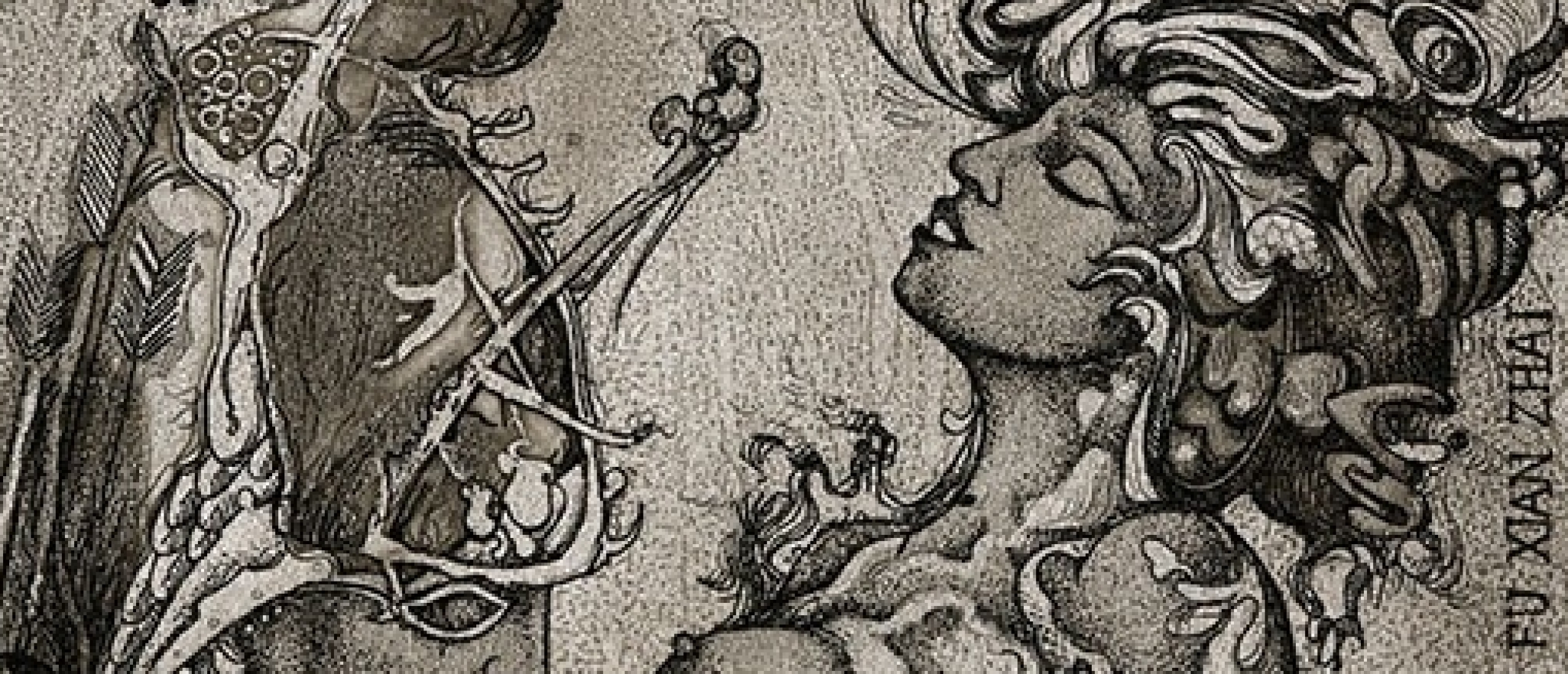
Remembering the erotic ex-libris of Alphonse Inoue, as avid readers ourselves, we decided to continue the research in this field. The art of the Japanese print master Shin Taga has already become the subject of a profound article at the Shunga Gallery. One of our writers, Alexandre Rodrigues da Costa, examined some unusual works of this extraordinary artist not so long ago. This time, we'll add some observations on his Fish series, but the main focus will be the erotic bookplates popular among collectors and devotees of the ex-libris genre.
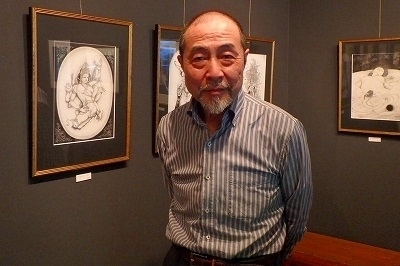
Fig. 1. Shin Taga, solo exhibition in Bunkyo, 2018 (hombetu.exblog.jp)
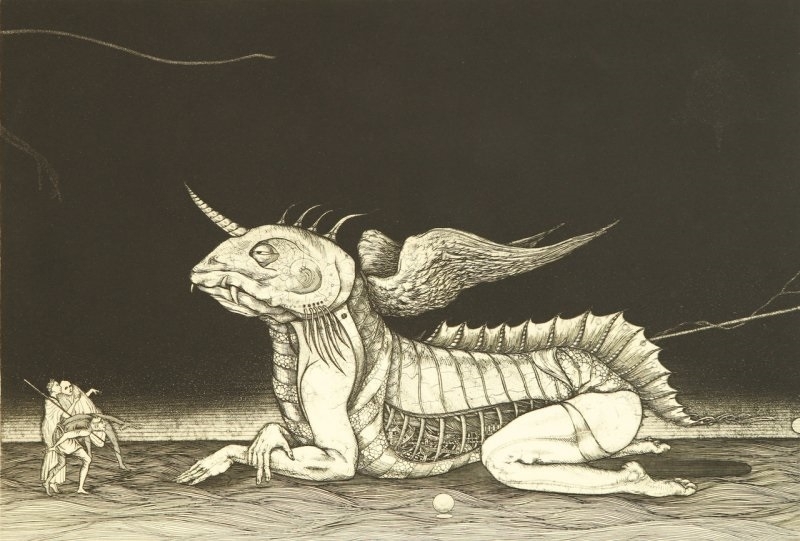
Fig. 2. Sphinx, copperplate engraving No.13, Fish series (yartgallery.shop-pro.jp)

Fig. 3. Suki / Love, copperplate engraving No.12, Fish series (yartgallery.shop-pro.jp)

Fig. 4. Eros, copperplate engraving No.20, Fish series (yartgallery.shop-pro.jp)
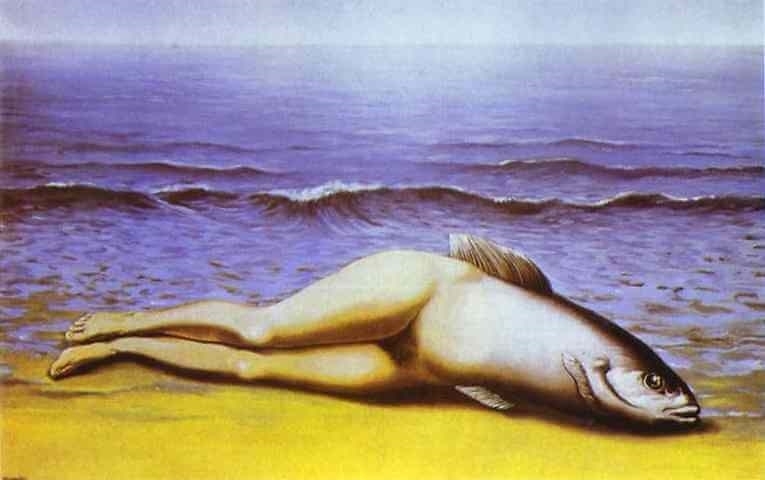
Fig. 5. Magritte The Collective Invention, 1934 (renemagritte.org)
Sexually Starved Predators
In his article, Alexandre paid attention to the similarities between Taga's grotesque and the works of some Western artists, such as Hans Bellmer and Harry Clarke. Examining the Fish series by Taga, we must also mention Magritte, namely, The Collective Invention (fig. 5). His mermaid's appearance is similar to that of the fish-women by the printmaker. Yet while the character of the Belgian surrealist is obviously helpless, which is emphasized by its out-of-water state, the creatures of Taga are (sexually) starved predators (fig. 4).
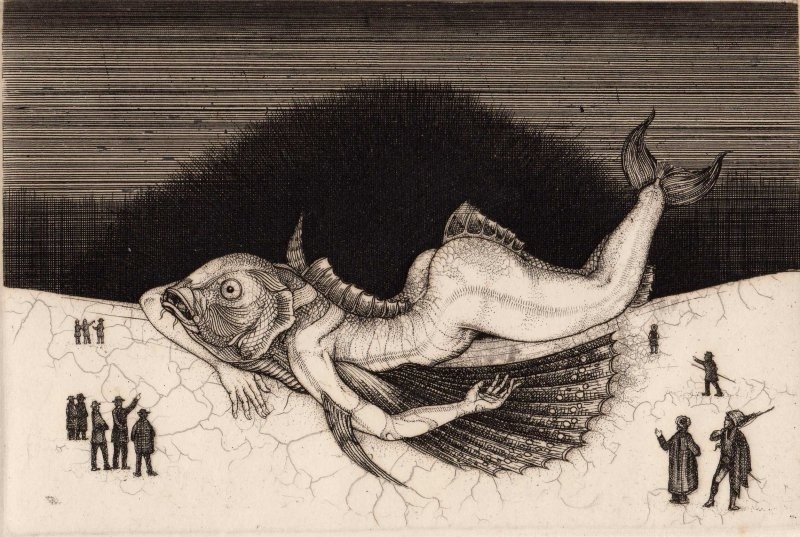
Fig. 6. Stranding, copperplate engraving No.4, Fish series (yartgallery.shop-pro.jp)
Shin Taga and the Dutch Masters
Speaking of Shin Taga's art, we can't avoid the strong associations with the Dutch masters of the grotesque and absurd, namely, Hieronymus Bosch and Pieter Bruegel the Elder. Bosch's adherence to small details is repeated in Taga's mesmerizing copperplates. As worded by Chihiro Yamamoto, "The more you look at the copperplate images by Shin Taga, the more you discover new things, and the more you get the illusion that the images, which are supposed to be static, start to move" (shunyodo.co.jp).
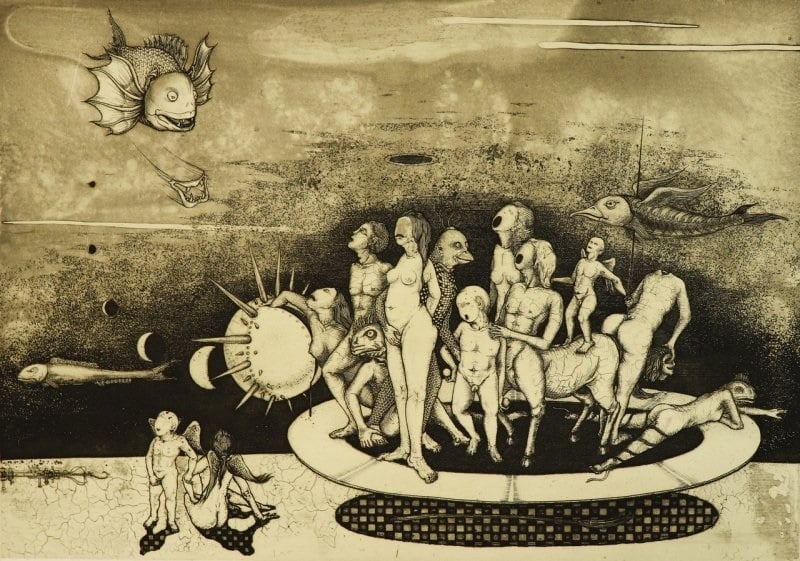
Fig. 7. Dream, copperplate engraving No.11, Fish series (yartgallery.shop-pro.jp)
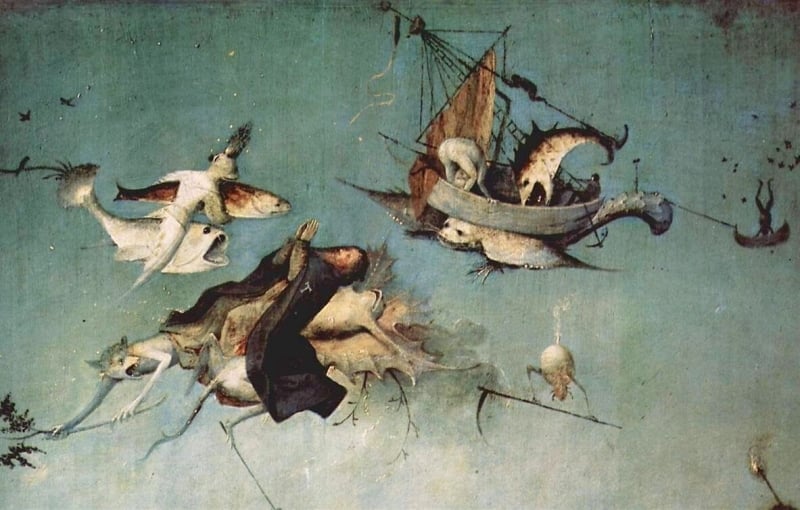
Fig. 8. The Temptation of St. Anthony, c. 1501, the left panel (arts-dnevnik.ru)
The Spirit of Bosch
The fish theme itself, which would make Taga a perfect illustrator for Lovecraftian Shadow Over Innsmouth, is shown from the perspective of medieval "surrealism." Fishes flying in the air (fig. 7) make us remember those from the upper parts of Bosch's triptych The Temptation of St. Anthony, c. 1501 (fig. 8). Scholars believe the motif symbolizes the absurdity of sin. This explanation, though simple, makes sense especially nowadays when you feel trapped inside the canvas of Bosch after reading the news.
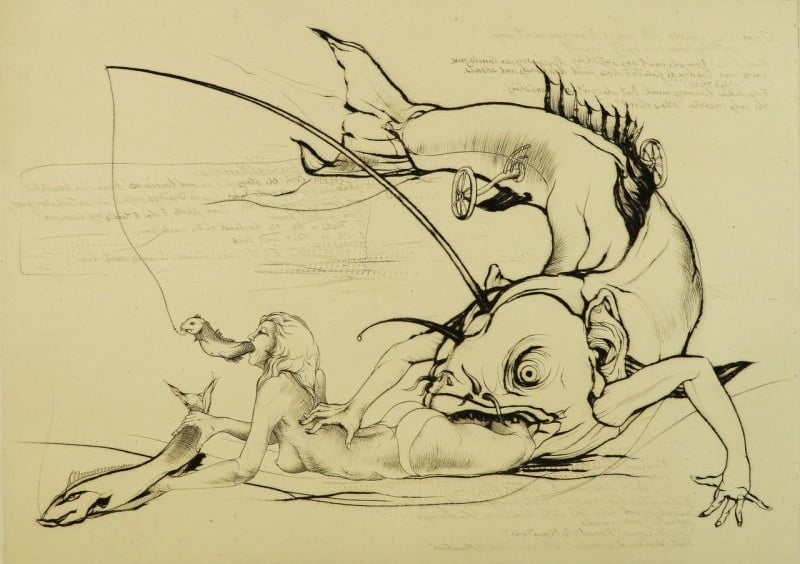
Fig. 9. Prey I, copperplate engraving No.7, Fish series (yartgallery.shop-pro.jp)
In the extensive Premium edition of the article you can discover more about the eating process in Taga's work, the depictions of humans (mainly females) devoured by sea monsters, his love for cats and books, favorite visual motif, references to Greek and Roman mythology, and 58 striking images.
Click HERE for the eroticism and the grotesque in Shin Taga's engravings
Sources: auctions.yahoo.co.jp; Wikipedia.org; artandobject.com

